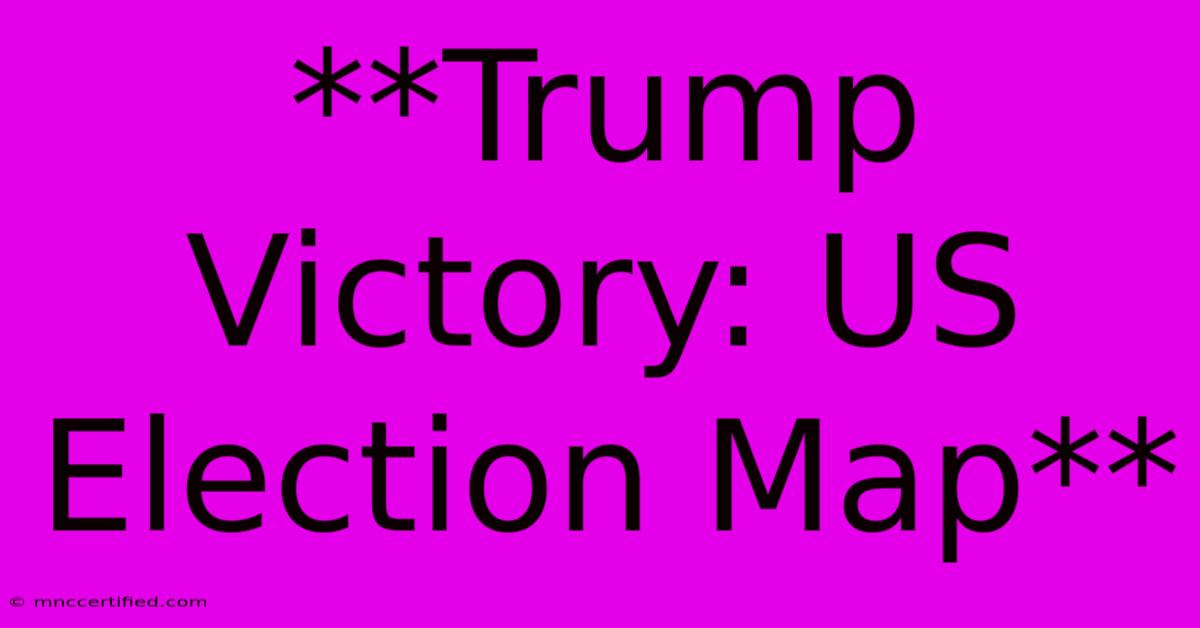**Trump Victory: US Election Map**

Table of Contents
Trump Victory: A Look at the 2016 US Election Map
The 2016 US Presidential Election was a monumental event, leaving many Americans in a state of shock and disbelief as Donald Trump emerged victorious over Hillary Clinton. The election map, which visually portrays the results of the Electoral College, provides a compelling narrative of Trump's victory and the deep political divisions within the nation.
Understanding the Electoral College
The United States does not elect its president through a direct popular vote. Instead, the Electoral College system, established by the Founding Fathers, determines the winner. Each state is assigned a number of electors based on its population, with a total of 538 electors nationwide. To win the presidency, a candidate must secure at least 270 electoral votes.
Trump's Red Wave: A Map of Electoral Triumph
The 2016 election map vividly portrays the red wave that swept across the country, giving Trump a decisive victory. Key states that flipped from blue (Democratic) to red (Republican) played a crucial role in Trump's success. These included:
- Michigan: A traditionally blue state, Michigan shifted towards Trump, largely due to his strong appeal to working-class voters.
- Pennsylvania: Similar to Michigan, Pennsylvania, known for its historic Democratic leanings, witnessed a significant shift towards Trump.
- Wisconsin: Another rust-belt state, Wisconsin voted for Barack Obama in 2008 and 2012 but ultimately sided with Trump in 2016.
The Divide: Understanding the Geographic Split
The 2016 election map also highlights a stark geographic divide in the nation. While Trump won a majority of the states, particularly in the Midwest and South, Clinton secured the popular vote, demonstrating a significant urban-rural split. The coastal states, with large metropolitan areas, largely voted for Clinton, while Trump dominated the inland regions, particularly those with struggling economies and a significant white working-class population.
The Aftermath: Implications for the Future
The 2016 election map continues to be a subject of intense analysis and debate. It signifies a shifting political landscape, with deep divides over issues such as globalization, immigration, and economic opportunity. The election results sparked conversations about the effectiveness of the Electoral College and the need for a more representative voting system.
Conclusion: A Look Back and Forward
The 2016 US election map offers a compelling glimpse into the political dynamics that shaped the election. It highlights the significant regional differences, the influence of economic concerns, and the power of populist rhetoric in shaping the outcome. As the nation navigates the complexities of the post-2016 era, understanding the factors that contributed to Trump's victory remains crucial in addressing the deep divisions and navigating the future of American politics.

Thank you for visiting our website wich cover about **Trump Victory: US Election Map** . We hope the information provided has been useful to you. Feel free to contact us if you have any questions or need further assistance. See you next time and dont miss to bookmark.
Featured Posts
-
Usha Vance Americas New Second Lady
Nov 07, 2024
-
Bitcoin Price Surges After Trump Election
Nov 07, 2024
-
Falling Wedge Pattern Scanner Trendspider
Nov 07, 2024
-
Trumps Re Election Implications For Bitcoin
Nov 07, 2024
-
Itv Shetland Tosh Talks Perez Successor
Nov 07, 2024